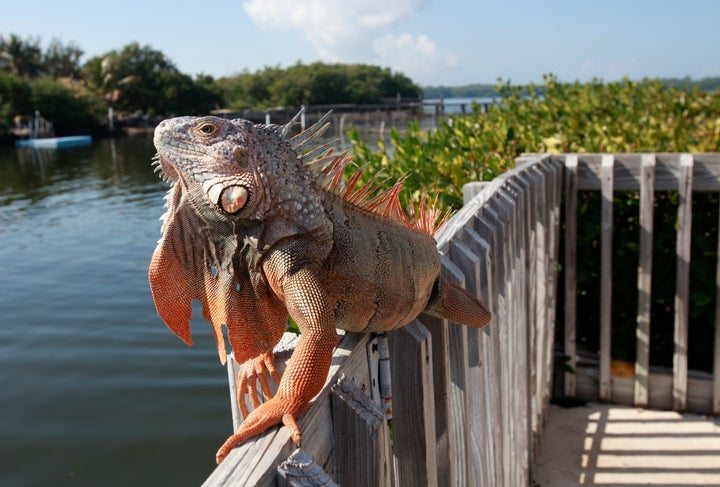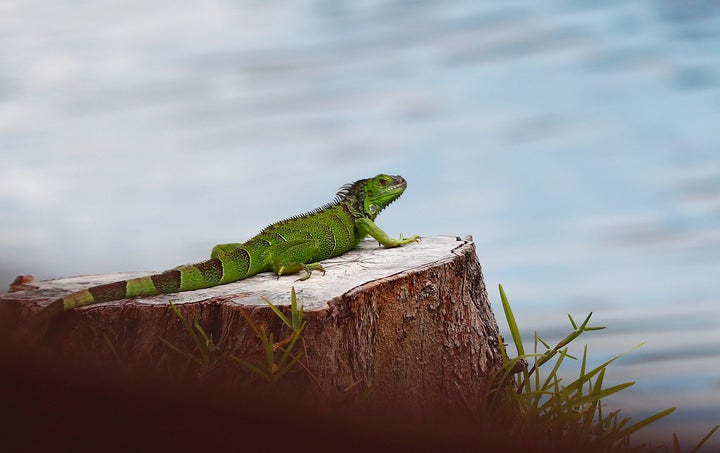Florida wildlife officials are urging people to kill green iguanas, saying the soaring population of the invasive lizards puts native plants and animals at risk.
The state Fish and Wildlife Conservation Commission placed a target on the reptiles in a website post that implores South Florida homeowners to “kill green iguanas on their own property whenever possible.”
“This is a serious problem from many standpoints,” Joseph Wasilewski, a biologist at the University of Florida, told ABC News. “They will destroy agriculture, undermine roads, cause electrical transformers to fail, they can transmit salmonella and can be an FAA safety hazard.”

Green iguanas, native to Central America and parts of South America, were first reported in South Florida roughly 60 years ago. Their population has boomed thanks to extended warm spells.
When temperatures dip into the 30s and 40s, their coldblooded bodies tend to shut down, causing them to fall out of trees and possibly die. But temperatures have only dipped below 50 degrees in Miami once in the last 18 months, according to the National Weather Service, providing conditions that have allowed the creatures to flourish.
That’s a major problem, the state says. Green iguanas, which grow to more than five feet, can live up to 10 years in the wild, and they lay as many as 76 eggs at a time, according to the Fish and Wildlife Conservation Commission.

Florida officials blame the lizards for damaging infrastructure by digging burrows that cause sidewalks, foundations, seawalls and canal banks to erode and collapse. They also eat native and endangered species of tree snails and a plant that hosts the endangered Miami Blue butterfly.
“As is the case with other reptiles, green iguanas can also transmit the infectious bacterium Salmonella to humans through contact with water or surfaces contaminated by their feces,” the Fish and Wildlife Conservation Commission says on its website.
The state encourages Floridians to kill the lizards in any way that doesn’t violate anti-cruelty laws. Suggested methods include stabbing them in the brain, decapitating them without having them suffer, and shooting them with pellet guns. Poisoning, drowning and freezing are not allowed.
“Homeowners that trap iguanas on their property may be able to obtain euthanasia services from local exotic veterinarians, humane societies or animal control offices depending on the location and availability of services,” the Fish and Wildlife Conservation Commission website advises.
Iguanas, known as the “chicken of the trees” in the Caribbean, are tasty, and their meat contains more protein than chicken, the Sun Sentinel previously reported.
“If you’re going to participate in killing them, [iguana] is good enough, healthy enough and tasty enough that you should absolutely take the time to cook it, too,” Brittany Peters told the Sentinel after roasting some iguanas she shot for burritos.
